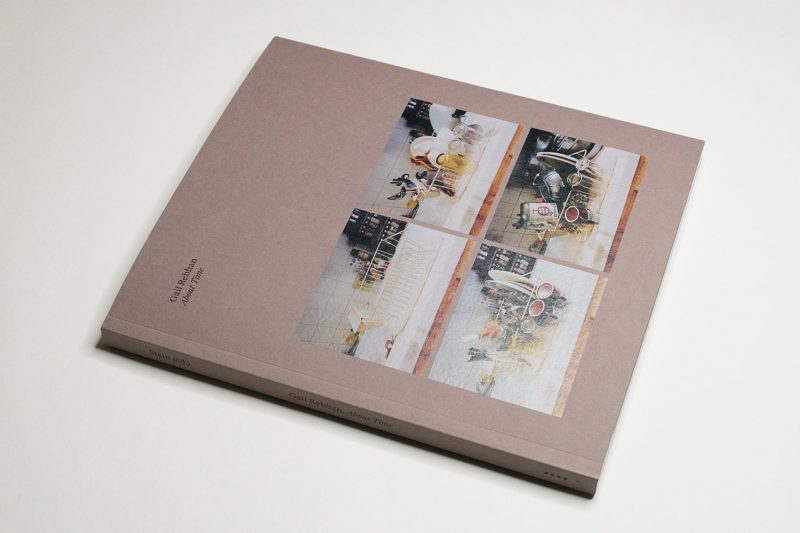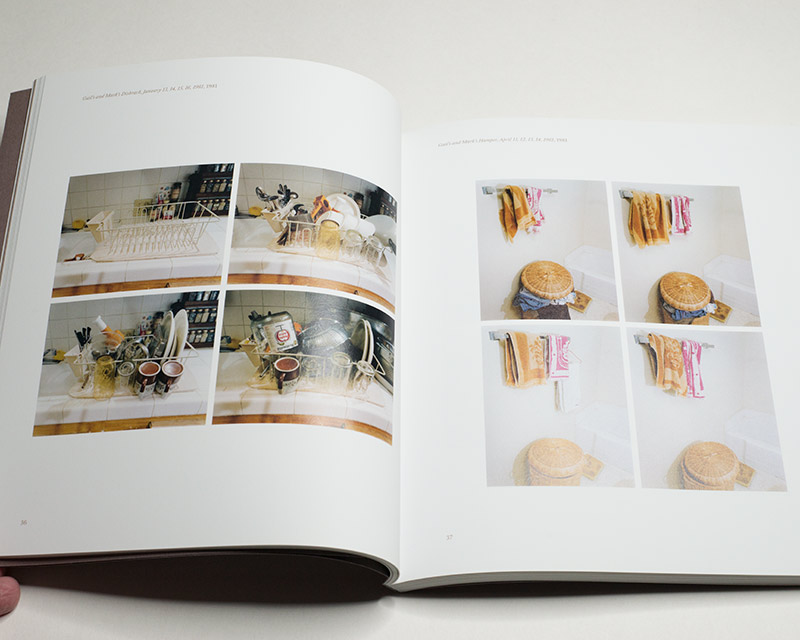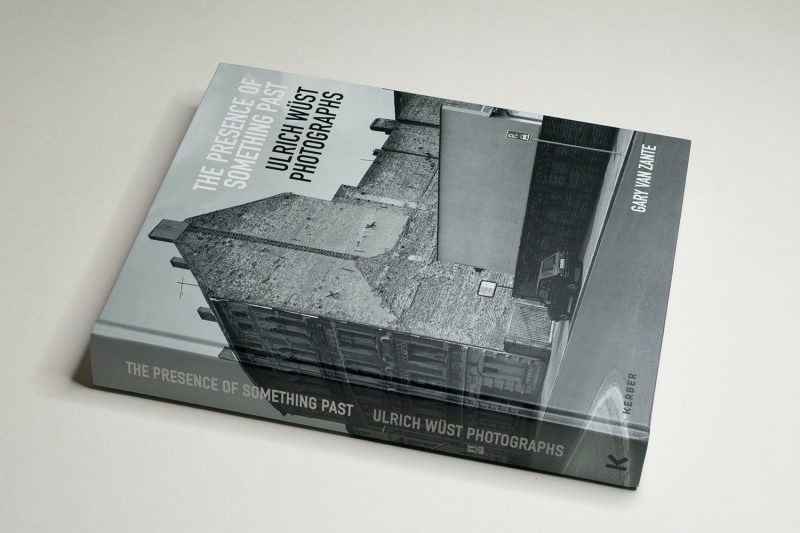I recently received a book in the mail that I had been trying to get for some time. It’s ひと夏 (One Summer) by Jōji (George) Hashiguchi. Up until I had the book in my hands, I had only seen selected spreads from it. There was something in those spreads that made me look for a copy.
Even before the book arrived in the mail, the friend who had helped me get a copy in Japan told me about its background. It also becomes clear from the book itself. In the texts (thankfully, there are English translations) the fact is mentioned that Hashiguchi took photograph on and near the set of a movie while it was being filmed (presumably over the course of one summer). My friend told me about the movie’s background, the memoir of artist Uchida Shungiku who had been sexually abused by her stepfather and who had produced a manga about it.
Knowing all of this had me on edge before the book arrived. Looking through the book, I don’t think the story of the movie comes across, though. I think you might be able to read something into a small number of the photographs. However, while some people are very adept at reading something they know into a photograph, I’m always a bit skeptical when this occurs, especially when that read involves a number of steps that move very far from what the picture actually shows.
When the book arrived, it wasn’t the movie’s story that had me on edge. Instead, the fact that in some ways the pictures aren’t real started to bother me. It’s straightforward to see, given that a number of characters re-appear in different pictures at different stages of their lives. Mind you, the pictures are real enough. They show real people. But what I had thought they would show — people encountered in some random fashion across a small town in Japan — is not.
All of photography is a fiction, and there is absolutely no insight to be gained from going over this fact one more time. Instead, insight might arrive from looking at our relationship to that fiction, whether as viewers or photographers.
Over the course of the past decade and a half, I have talked to a large number of photographers. I have come to realize that while photographers are very adept at understanding how photography expresses the world (people can easily see the effect of a lens), many of them are not any better at navigating the element of fiction in photography than people who don’t call themselves photographers.
Much like everybody else, photographers cling to their beliefs, the pictures be damned — even when it’s their own photographs. After all, photographers are human beings, much like everybody else.
In a nutshell, in pictures we want the world to look the way we believe it looks, even if with words we will claim something completely different. Mind you, making the world look the way be believe it looks also is one of the few things that makes photography genuinely interesting. If photography were a world that consisted only of passport-type pictures — documents following strict guidelines and devoid of any element of passion, it would only be interesting to a very small number of people.
However, the problem with photography’s deceit — showing us the world as seen by someone’s vision (let’s call it vision) — also creates a problem, especially when we buy into it too much: when we insist on the deceit being overwhelming, crowding out our other, critical facilities.
I think that a variation of this occurred when I encountered ひと夏. I wanted so much for the pictures to emerge from what we could call the real world. (Let’s not argue what the real world might be. I think we might all agree that it’s not what we encounter in movies.) Instead of focusing on the beauty of the photographs, though, I now spent all my time thinking about the artifice behind them. It is almost as if I had admired the work of Jeff Wall as snapshots, only to be told by someone that the pictures are in fact staged.
What this means is that the belief what pictures show also includes an element of how they do it. As viewers, we want to be deceived and we don’t want to be told about it. As photographers, we deceive ourselves and we don’t want to be told about that.
It’s inevitable, though, that you will be deceiving yourself when you go out into the world with your camera. You can tell yourself that you’re only going on a road trip across the US to photograph what you come across (let’s just pick this as a convenient enough example). But the reality is that you mostly only come across what you want to find. Or rather, you come across a lot of things. But the camera is a great tool to crowd out anything that doesn’t conform to your vision, and you end up with exactly the pictures that you set out to take.
Consequently, most US road-trip projects (remember, this is just an example, I could give you many others) show exactly the same thing, namely the view of the country that is entertained by a specific group, which usually consists of the relatively well-off (mostly white) men that do the road trips and the really well-off (mostly white) people that pay for pictures in commercial galleries or that sit on the boards of museums and other art organisations.
You can easily see how and why that is a problem. It’s no surprise that projects of road trips in the US all end up looking the same, featuring the same run-down locations, oversized flags, old TV sets or armchairs in ramshackle rooms, and crunchy white dudes with long beards. Of course, I’m simplifying this a little bit — but really not all that much.
When Richard Avedon photographed his version of this trope, John Szarkowski said “Avedon’s West is not the West as I know it.” I think what the curator had in mind was exactly what I talked about above. He didn’t say “Avedon’s West is not the West”, he said “the West as I know it.” (my emphasis) So there was a gap, and the famed curator wasn’t particularly happy about that.
It’s something we might encounter in our daily lives when someone takes our portrait and then shows us the result. Almost inevitably, we will tell them that we don’t look that way or that we don’t like the picture (or any variation thereof).
Obviously, no single individual can photograph the American West — or any other locale — in a way that would do it justice. Ignoring the fact that we’d have to agree on what exactly “doing justice” would mean, an all-encompassing view would probably end up in passport-picture territory. Especially if you want to create something that can be seen as art, you will have to make choices; and those choices include huge elements of omission.
Regardless of what you think about Avedon’s West, there is a merit to it, though. It’s just not that the pictures say much about the West itself. Instead, they say a lot more about its maker and, by extension, the society he was embedded in. Avedon went to where, to use an advertising slogan from the time, the flavour was. And he got the pictures that would not have been out of place in a cigarette ad, except that ads are supposed to show a promise and not actual consequences.
Photographing the things that you believe in, that you identify with, or that confirm your expectations can take many forms — much like looking at photographs itself. In my book Photography’s Neoliberal Realism, I looked into a different example. Just like in the case of Avedon, there is merit to that kind of photography. It shows us a different aspect of the society we live in. There obviously is a very interesting and revealing overlap with what we can deduce from American road-trip photography.
For both sides, photographer and viewers, the challenge thus is to work against the impulse to flock to the familiar. The familiar is not necessarily your friend. For sure, it will stand in the way of becoming a better — a wiser, more caring — person. Unfortunately, this means that looking at photographs is work.
The same is obviously true for making photographs. There is all the work of looking for the pictures, of working on them once they have been taken. On top of that, while looking for photographs there is the added work of not fully giving in to the temptation of being attracted to what one is attracted by. Many of the good photographs — the photographs that later, but not in the moment, will be good — are those made against one’s own inclination to remain on the safe, comfortable side.
When I use the words “safe” and “comfortable”, I’m not speaking about the feelings of another person who might be involved, say when a portrait is being made. Other people should not be made to feel unsafe or uncomfortable for the sake of one’s own photographs. The person who has to be made unsafe or uncomfortable is the photographer. Please note that I’m not advocating exposure to literally unsafe situations. Instead, I mean the safety of one’s own convictions, the safety of knowing that certain pictures will play oh-so well with the audience one has already established.
Even as in the world of photography, a neglect of safety or comfort is usually outsourced — people being photographed are made to feel unsafe or uncomfortable, or maybe an audience is being challenged in such a way, it is the photographer on whom that focus should be placed. I truly believe that if as a photographer you’re not challenging yourself first, then you have no right whatsoever to demand the same from your audience.
Challenging yourself first does not automatically translate into the right to challenge your audience in equal fashion. Don’t take my words as an invitation to engage in broad transgressiveness for its own sake. Instead, I’m interested in a form of transgression whose first (immediate) concern is to allow oneself to become a better person and whose second (later) concern is to have the final audience partake in that. I reject nihilistic transgressiveness, performed for its own sake and devoid of any redeeming qualities (the work of Dash Snow or Antoine d’Agata comes to mind).
As a medium, photography does everything in its power to make the task of challenging oneself difficult. In part, this is because it is easy to take a picture. You press some form of button, and you have a picture. There is the added deceit that photography shows what is “real” by making it look as if what is photographed and then presented were real (it might in fact be). Lastly, there is the consequence of these two together, which creates the invitation to stay close to what one believes in, to regurgitate one’s beliefs in visual form.
Thinking about it again, maybe what had me so confused about ひと夏 was that it simply wouldn’t conform to any of my ideas of what it should be. The work is rooted in an artifice — a movie set and its actors, which in itself derives from a different form of artifice that, however, is based in a very uncomfortable fact — the manga creator’s incredibly painful upbringing. The book brings together disjoint aspects of these, and they’re disjoint for the sole reason that they don’t conform to how I thought things would come together.
To paraphrase the title of a book by Alexei Yurchak, everything was real until it was not any longer. The real was a fake, and the fake had been set out to be real (or at least be grounded in a fair amount of reality). It was merely a strange coincidence that I had just started a new project, taking the first photographs the weekend before the book arrived. Even as I was photographing, I tried to remind myself not to only look for what I knew that I was looking for. But even that seems too simple now.
Whatever the outcome might be(come), photography is easy, too easy. We have to make it hard, impossibly hard for ourselves to have a chance to get to where it might lead the way — so that we might better know ourselves.
It is important to realise that ultimately, photography’s deceit is our own. We deceive ourselves with the very pictures we make; and we allow ourselves to be deceived by how we approach other people’s pictures.
There regularly is talk of a photographer’s intent when their work is discussed. I’ve argued for a long time that intent is completely meaningless. Once the work is out in the world, its meaning is generated by the pictures, regardless of whether or not it aligns with the original intent. In daily life, we run into problems with intent all the time. We all know that the right intentions can easily lead to undesired results, and we also know that we cannot explain those results away by insisting on our intentions. So how or why would intentions be more useful in the world of photography?
Instead of discussing a photographer’s intent — a convenient device to put the ball in the photographer’s court, so if there’s a problem, we can chastise them while keeping our own purity (note how especially on social media, such discussions often get very toxic very quickly), we ought to be discussing our own expectations a lot more.
What do we expect from photography? What do we expect to see? What do we not want to see? What do we believe in, and how does what we believe in colour what we see in other people’s (and our own) pictures? Going further: how can we understand what photographs show as reflections of the beliefs and ideologies that fueled their making?
These are the questions we need to be asking. We need to understand photographs better.
Photography is rapidly approaching its 200th birthday. And yet we often approach photographs as if we had just encountered them for the first time, buying into their artifice — and our own deceit.











